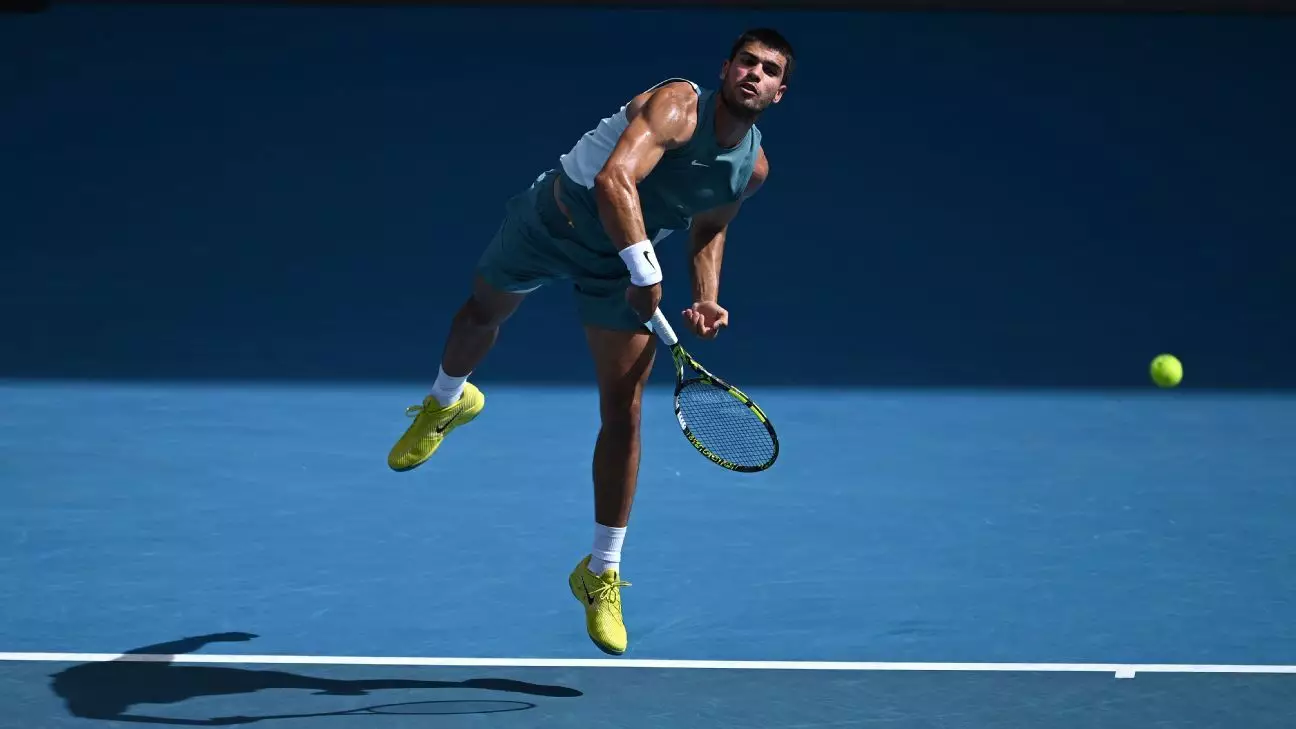Carlos Alcaraz continues to impress the tennis world, reaching his 10th career Grand Slam quarterfinal at the Australian Open in Melbourne—an achievement that ties him with legends of the sport for the most quarterfinal appearances by a male player before turning 22. His latest victory came against the 15th-seeded Jack Draper, who, facing persistent injury issues, had to retire after two sets, leaving the score at 7-5, 6-1 in favor of Alcaraz. This match turned out to be both a testament to resilience and a slight disappointment, as Alcaraz expressed his reluctance to win under such circumstances.
Winning should always be celebrated, but Alcaraz showed his sportsmanship and empathy towards Draper, who has dealt with a multitude of physical issues throughout the tournament. The two young players were initially set to train together in the offseason, but injury prevented that opportunity. Alcaraz’s Comment on the match encapsulated the sentiments of many empathetic athletes: “It’s not the way I want to win a match, to get through to the next round.”
With his advancement, the Spanish tennis prodigy is poised to face either Novak Djokovic, a 10-time champion at this venue, or Jiri Lehecka in the next round. Alcaraz demonstrated a sharp awareness of the importance of tactical preparation, stating, “I’m going to watch that, for sure,” referring to the pivotal match between Djokovic and Lehecka that was scheduled for the evening. It is evident that Alcaraz is keenly aware of the competition that lies ahead, showcasing the mental fortitude that has been instrumental in his rising career.
Alcaraz’s determination to observe his potential opponents points to an intelligent approach towards the game. The ability to study other professionals is undoubtedly an asset for a young athlete seeking to refine his skills and strategies on the court. Balancing recovery with tactical preparations speaks volumes about his maturity and focus, traits that set him apart in a sport that thrives on mental and physical strengths.
As Alcaraz progresses through this tournament, he finds himself on a historical parallel with legends such as Bjorn Borg, Boris Becker, and Mats Wilander, all of whom managed similar successes at a young age. This level of achievement introduces him into a conversation that is often reserved for the most revered figures in tennis history.
What is particularly noteworthy is Alcaraz’s ambition to capture the elusive Australian Open title, which would complete his career Grand Slam. Having already claimed multiple titles at Wimbledon and other Grand Slams, this aspiration drives him to new heights. As he declares his happiness about his performance, there is a clear sense that he is aware of the broader narrative he is crafting: one of excellence, potential, and relentless ambition.
On a day marked by Alcaraz’s milestone, Tommy Paul also made headlines by defeating Alejandro Davidovich Fokina in a one-sided match, advancing to his third Grand Slam quarterfinal with a clean sweep of 6-1, 6-1, 6-1. In less than 90 minutes, Paul displayed an exemplary level of tennis, completely dominating a rival who seemed to wear down physically. While Davidovich Fokina became known for his remarkable comebacks in previous matches, Paul’s efficient game marked a definitive end to that narrative.
Paul’s route to success at Grand Slam tournaments cannot be overstated, as he aims to replicate his previous best performance from last year. Despite his success, he expressed respect for Davidovich Fokina’s tenacity, highlighting the admiration and sportsmanship prevalent within this competitive atmosphere.
As both Alcaraz and Paul continue in their quests at the Australian Open, they personify the fusion of sportsmanship and sheer talent that is redefining tennis. Their achievements not only enhance their legacies but also continue to inspire the next generation of athletes, reminding us that every match is more than a game; it is an opportunity to honor the sport they love.

